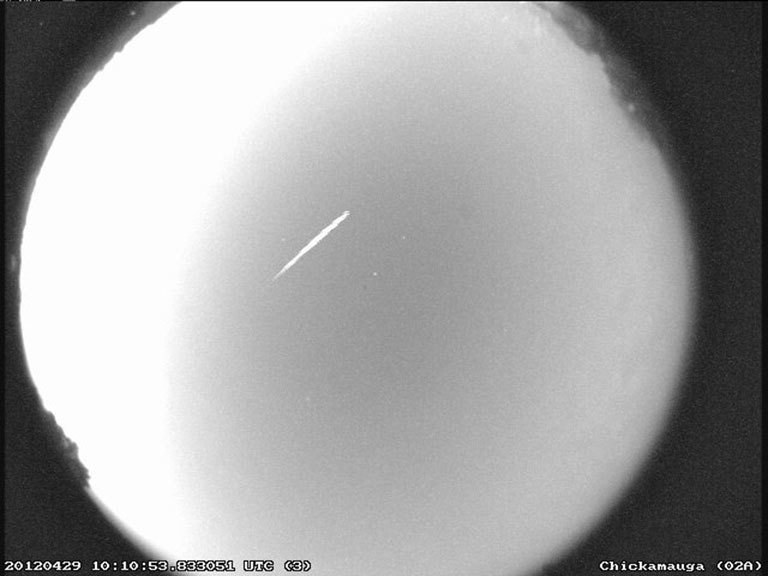
Photo: An Eta Aquarid meteor streaks over northern Georgia on 29 April 2012. Image Credit: NASA/MSFC/B. Cooke
By Madison Mooney
The Eta Aquarid (also spelled Eta Aquariid) meteor shower is set to peak in the wee hours of May 5. However, a bright waxing gibbous Moon will drown out most of the nighttime action. That being said, viewing this particular shower will require some very early mornings.
What is a meteor shower?
A meteor shower occurs when the Earth passes through the orbital path of debris left behind by a comet. These bits of dust, ice, and rock are called meteoroids. When a meteoroid enters Earth’s atmosphere, it becomes known as a meteor. Meteors burn up as they fall through the atmosphere, creating bright streaks of light in the night sky that are often referred to as “shooting stars.” If a meteor survives passing through the atmosphere and strikes the Earth’s surface, it is known as a meteorite.
During an Eta Aquarid meteor shower, the meteors appear to originate from Eta Aquarii—one of the brighter stars in the constellation Aquarius. Eta Aquarids are pieces of Halley’s Comet, left behind in its orbital path. Halley’s Comet is also the source of the Orionid meteor showers that occur in October.
When and how can I view the Eta Aquarid meteor shower?
Though the Eta Aquarid meteor shower will peak on Saturday, May 5, the best time for viewing will be in the early morning hours of May 1, 2, and 3. The nearly full waxing gibbous Moon will be too bright to make out any meteors for most of the night’s dark hours, so it’s best to attempt viewing after the Moon has set and before the Sun rises. The exact time of moonset and sunrise depends on your area and varies over time, so we suggest consulting a location-based sunrise/sunset calendar to get a better sense of the best time for viewing.
The best environment for viewing is a dark area with an open view of the sky. Make sure all unnecessary lights are turned off and give your eyes at least 20 minutes to adjust to the darkness. Then, lie flat on your back and look up at the sky. Be patient and allow at least an hour for viewing, as meteors tend to come in short bursts with lulls in between.